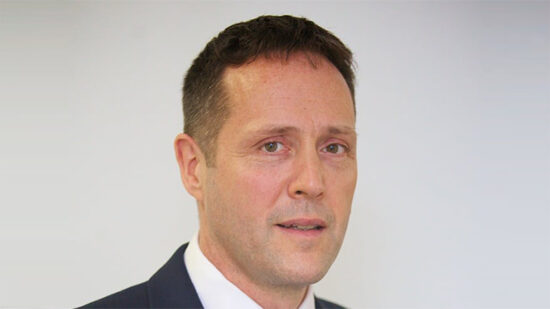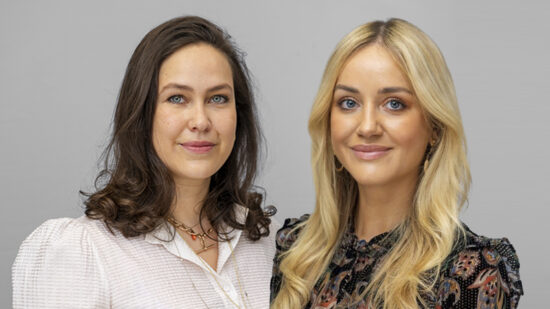European policymakers have been busy since the start of 2015.
Not only have they delivered a quantitative easing package that surprised even the most cynical observers with its size and commitment, they have had to deal with Greece’s lurch to the left with the election of the Syriza party and the ensuing renegotiation of its debt obligations.
Even the most ‘stockpicking’ of fund managers have been forced to assess the impact of macroeconomic and policy factors on their portfolios. What have been their conclusions?
The policy measures have been launched in response to persistent concerns over deflation, which continued to gather pace in January, with prices across the eurozone down by 0.6% on the previous year, compared to 0.2% in December. Energy was the strongest contributor to the fall on the back of the sliding oil price, but food prices have also slipped.
A shot in the arm
The need for QE had long been evident, but there had been fears that the ECB would not hit the €1trn market. As it was, ECB president Mario Draghi delivered an injection of at least €1.1trn (£834bn), buying €60bn of bonds each month from the banks until the end of September 2016 at the earliest.
The immediate impact on financial markets was swift: equities leapt higher, bond yields compressed further and the euro declined. The slide in the currency was already well under way, after the Swiss removed its support for the currency by abandoning its peg.
The question for European investors is whether this will be sustained and who will be the key beneficiaries – and victims – of the new environment in Europe.
A lot depends on whether fund managers believe that QE will have an impact on the real economy.
There are some encouraging early signs: Germany has already delivered stronger-than-expected growth data, for example, but concerns over a ‘Grexit’ persist and economic recovery is far from assured, with measures to promote economic reform remaining some way from implementation.
A symbol of hope
For those that believe QE will have an impact, the right approach is to look to smaller companies, domestically-focused companies and those likely to benefit from euro depreciation.
Edward Rosenfeld, manager of the Lazard European Smaller Companies fund, is clear that the liquidity created by quantitative easing will help his part of the market.
He says: “People often say QE works in practice but not in theory, and I agree with that. There is no real reason why creating more money and liquidity should help the economy, but the experience of the UK or US is that it has boosted optimism, and that has been part of its strength.
“For our part of the market, small caps tend do well when credit is easily available. In difficult times, they have fewer financing options. Equally, they tend to do better at times of rising economic activity and easy credit. I would therefore be relatively optimistic about the prospects for smaller companies in this environment.”
He also believes greater liquidity will promote merger and acquisition activity.
He says: “Larger companies have now had many years of balance sheet repair – many have accumulated a lot of cash and repaid debts. These companies are financially flexible. This augers well for small caps, who should be beneficiaries of merger and acquisition activity.
“In a low growth, low interest rate environment, it makes sense for larger companies to look to buy smaller companies to generate growth.”
Nevertheless, the environment is still likely to require discernment. Rosenfeld says good companies have been rewarded for executing well on their business model, but the opposite is also true.
Equally, he is wary of focusing too heavily on the peripheral economies as the likely beneficiaries of a turnaround in growth. He believes the domestic focus of small caps will be an advantage, but not universally.
Rosenfeld adds: “As of now, we have relatively little peripheral European exposure across Iberia and
Greece. We have some exposure in Italy but these tend to be pretty defensive areas. We have 15% in Germany. We believe industrial companies could be well placed to benefit from the weaker euro.”
More factors at play
Marcus Brookes, head of multi-manager at Schroders, is bullish on the European economy, believing it will outperform expectations, and he is overweight across his portfolios in more cyclical, domestic funds. QE is important, he says, but it is not the only thing driving European recovery.
He says: “In 2012, we had a much stronger euro and much stronger oil price, and countries were in the grip of trying to do more austerity than the next guy. Europe had a tightening – fiscally and monetarily – of around 3.8% of GDP.
“We now have a lower euro and lower oil, and countries don’t need as much austerity. This is even before QE. In the European market, people are still relatively bearish on their expectations.”
James Sym, manager of the Schroder European Alpha fund, is also bullish.
He says: “This will be the first year when profits in Europe will rise quicker than in the US. The euro has weakened by about 15% and the lower oil price is likely to deliver a boost to household consumption of around €1,000 per household.
“Equally, pretty much every global investor dislikes Europe, so if profit growth is higher than in the UK, there could be a huge move from one asset class to another. You have to be very selective – some companies are very expensive.”
As a result, he is underweight companies such as Nestlé, Roche and Sanofi, preferring a high financials and consumer goods weighting, through companies such as Renault and Pandora.
Strength from weakness
The euro is an important consideration for all managers. Rosenfeld says the weakening of the euro is “very significant”.
While he does not aim to predict the likely direction of the euro, he is aware how the companies in which he invests will be affected, and does not want to bet against it. He believes the weaker currency is another reason why the European economy might surprise investors with its strength.
Tim Stevenson, manager of the Henderson EuroTrust, is also aiming to isolate those stocks that are likely beneficiaries of the weakening euro.
He says: “One of the biggest beneficiaries will be those companies that sell in dollars as the euro has weakened.”
Stevenson holds a number of companies that generate more than 40% of their revenue from North America, such as Fresenius Medical Care, Grifols, Wolseley, Novo Nordisk and Pandora.
He believes economic data in Europe will improve during the next few months but suggests it may not be decisive enough to convince people that sustainable growth is assured.
He says: “ECB president Mario Draghi has been repeatedly making the point that the central bank can provide the framework for support, but Europe’s governments must commit to the necessary structural and labour market changes. Countries that have inefficient systems need to reform and collect their taxes. This should help to engender trust, not just from other governments but from financial markets as well.”
He says Europe could still go dramatically wrong over the next 12 months unless someone can come up with a way of cancelling the debt built up by previous generations, rather than kicking it down the road again.
This might argue for greater caution, and Stevenson also has more defensive holdings such as Nestlé, Astrazeneca and Novartis, though all should also be beneficiaries of the weaker euro.
Notes of caution
Muhammed Yesilhark, head of the European equities team at Carmignac Gestion, remains cautious for similar reasons. He is prioritising groups that can deliver consistent earnings growth in all types of economic environment, believing the economic environment is still shaky.
He is looking at ‘nifty fifty’-style companies, an echo of the solid ‘buy and hold’ large-cap stocks that performed well on the New York Stock Exchange in the ’60s and ’70s.
He says: “There has been significant bifurcation in markets, but not necessarily related to positive or negative earnings growth. Telecoms, for example, have had negative earnings growth, but have still been one of the top-performing sectors. Getting earnings growth right is not necessarily key. We try to listen to our portfolio.
“At the moment, it is becoming more difficult to find ideas, so we are being forced into taking riskier decisions. We maintain a cautious view, which is reflected in our equity exposure.”
He also holds companies such as Fresenius Medical Care and Shire.
A cycle of assumption
It doesn’t help that European equities are not exactly cheap. They look cheap on cyclically adjusted measures, such as the Shiller P/E, but that assumes profits will recover, which in turn assumes stronger economic growth.
Equity managers may be interpreting the post-QE environment differently, but the trajectory for fixed income is clearer: German 10-year bond yields at around 0.4% hold little appeal for any investors.
Jean Médecin, investment committee member at Carmignac Gestion, says: “With inflation in Germany currently running at -0.3%, investors might consider they are still well served with a negative yield of -0.22% on German sovereign bonds, in particular if you consider Germany’s status as one of the fixed-income safe havens on the planet. Still, the risk/reward of investing in German sovereign bonds seems quite poor.”
He believes there are attractive alternatives in European fixed income, notably among European peripheral countries such as Spain and Italy, which offer sovereign bonds yielding over 1.5% for 10-year maturities.
The long road
However, most are avoiding the asset class.
Brookes points out that investors now have to pay the Swiss government to lend to it. He believes the bond world is due the shake-up that did not happen last year. Yields on the most highly rated companies such as Nestlé have tracked government bond yields lower and have also benefited from investor anticipation of lower availability of government bonds.
As a result, there appears to be relatively little value at the ‘safe’ end of the bond market.
European policymakers may have been busy but investors remain divided as to the likely outcome of their efforts.
Japan has shown QE is not an automatic path to economic growth. Early signs are promising – but Europe has a long way to go.







